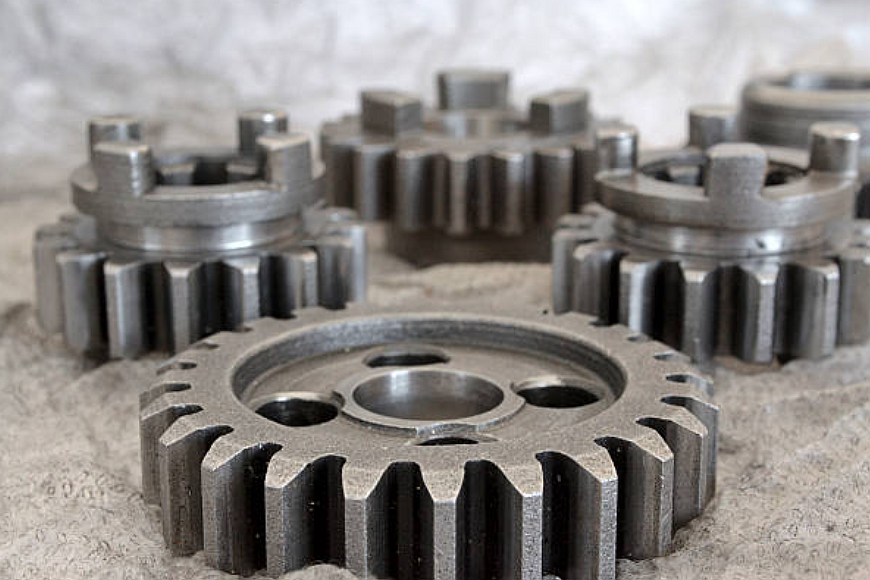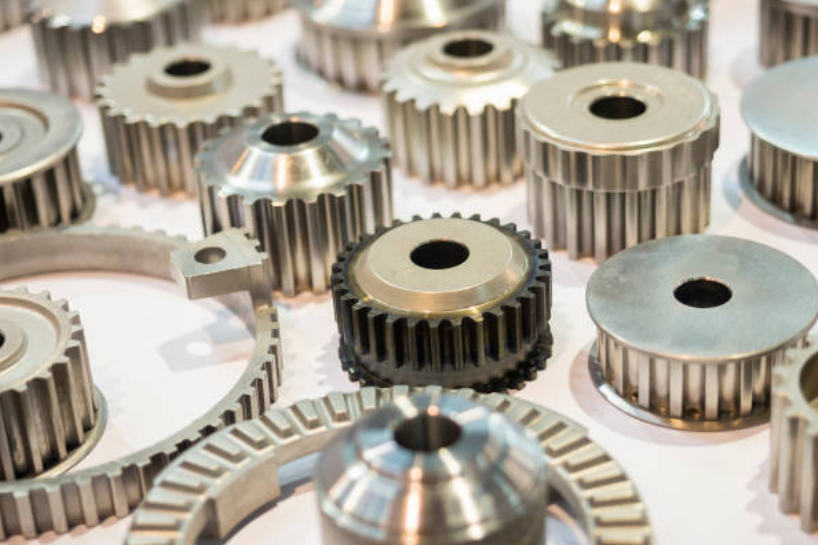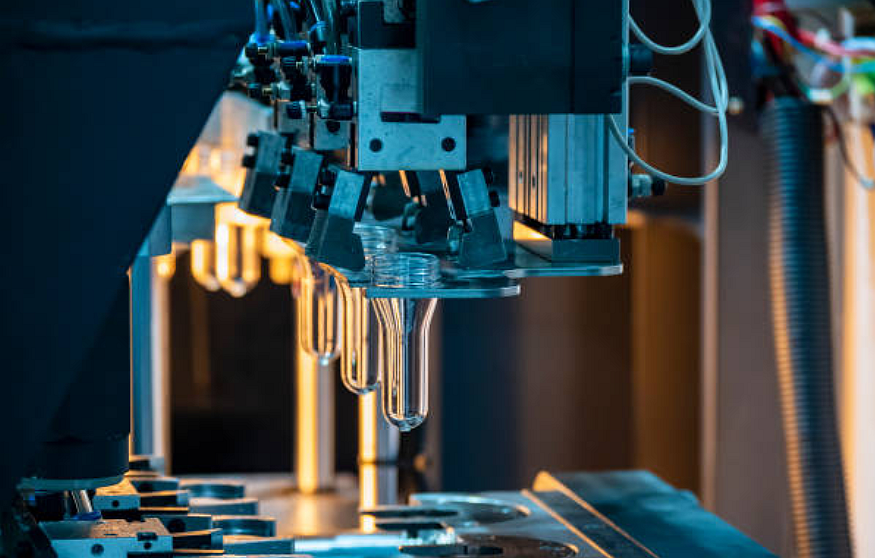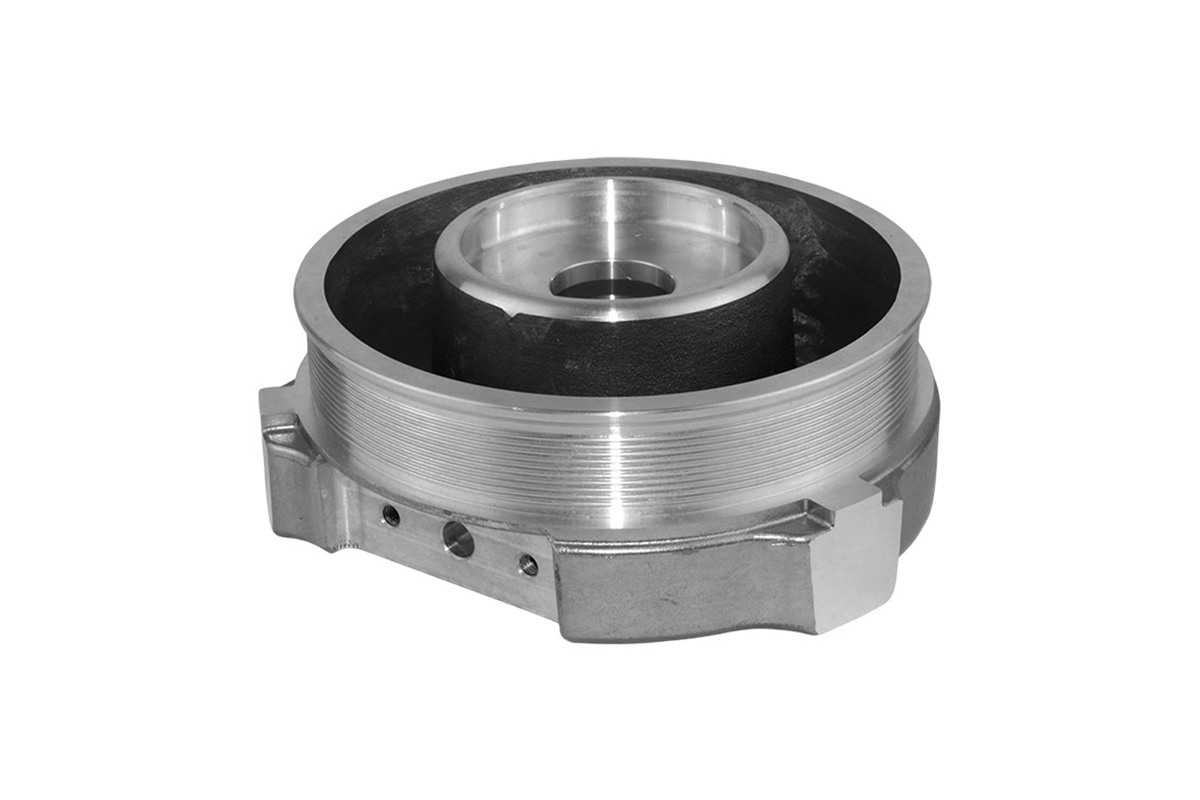Metal Injection Molding | What Types of Metals Can Be Used in MIM?
Definition of Metal Injection Molding (MIM)
Metal injection molding (MIM) is an advanced powder metal injection molding (PMIM) manufacturing process that produces small, complex metal parts to tight tolerances and high densities. In MIM, metal powders are combined with polymer binders to create a feedstock material that can be injected into molds using plastic injection molding techniques. After molding, the binders are removed through debinding of MIM parts, and the metallic component is sintered at high temperatures to fuse the particles into a solid metal part.
Importance of metal selection in MIM
Metal selection is crucial in metal injection molding as it fundamentally impacts feedstock properties, molding behavior, debinding, sintering characteristics, final part properties, and secondary operations. The specific alloy composition and powder morphology drive important factors like densification, shrinkage, mechanical performance, machinability, corrosion resistance, cost, and more through every step of the MIM process. Components must be designed around the capabilities and limitations of the MIM materials chosen, making metal selection a foundational choice in any MIM application.
Considerations in MIM Material Selection
Choosing a suitable material is crucial in metal injection molding. Key considerations include mechanical properties, corrosion resistance, cost, moldability, machinability, sintering behavior, and regulatory compliance. The ideal alloy will balance processability, performance, and cost.
Mechanical properties: Strength, flexibility, hardness, etc., must match the application requirements. Alloying additions can tailor properties as needed.
Corrosion resistance: Materials like stainless steel, MIM, and nickel alloys provide excellent corrosion resistance, crucial for long-term use in harsh environments.
Wear resistance: Hard tungsten MIM alloys or stainless steels with carbides better resist wear in high-abrasion applications like automotive components.
Magnetic properties: Using ferromagnetic alloys enables magnetic capabilities essential for components like soft magnets and motors.
Biocompatibility: Implant-grade titanium MIM or cobalt-chromium alloys are biocompatible for medical devices interacting with the body.
Cost: Low-cost alloy powders like stainless steel MIM help control component costs in high-volume production.
Sintering shrinkage: Alloys prone to excessive shrinkage can result in out-of-tolerance dimensions after sintering MIM parts.
Molding characteristics: Powder shape and size distribution significantly affect feedstock viscosity and moldability.
Debinding MIM: Some reactive alloy powders are susceptible to defects during binder removal.
Machinability: Softer, more machinable alloys simplify secondary finishing operations.
Regulatory compliance: Aviation and medical alloys may require stringent certification for regulated applications.
Stainless Steel MIM materials
Stainless steel MIM is widely used in metal injection molding due to its excellent corrosion resistance, high strength, and good elasticity. It exhibits superb mechanical properties, making it suitable for strength and durability applications.
Stainless Steel | ||
304 | Excellent corrosion resistance. High strength and hardness after heat treatment. | Biocompatible grades are used in medical applications. Widely used for small complex parts needing corrosion resistance. |
440C | ||
430 | ||
316 | ||
Properties and Characteristics:
Excellent corrosion resistance due to chromium content (10.5-30% Cr)
High strength and hardness depending on grade
Non-magnetic austenitic grades are available
Can be precipitation hardened through heat treatment
More machinable than ferritic or martensitic stainless steels
Available in wrought or powder metallurgy grades
Densities around 7.7-8 g/cc
Applications in MIM:
Molding MIM parts for medical and dental instruments - high biocompatibility
Corrosion-resistant industrial components like valves and nozzles
Marine hardware exposed to saltwater environments
Food processing and pharmaceutical equipment need good hygiene
High-strength parts like hand tools and gears
Decorative and luxury products like jewelry and watches
Cost-effective substitution for titanium or cobalt alloys
Overall, stainless steel MIM is a versatile, corrosion-resistant, strong MIM alloy suitable for diverse applications, especially where cost is essential.
Low-Alloy Steels
Low-alloy steels balance strength and affordability, making them a popular choice in MIM. These steels contain small amounts of alloying elements such as chromium, molybdenum, and nickel, enhancing their mechanical properties. With their superior strength and wear resistance, low-alloy steel parts are commonly used in industrial machinery, firearms, and consumer electronics.
Low Alloy Steels | ||
MIM 4605 | After heat treatment, achieve high tensile and yield strengths—good toughness and ductility in heat-treated conditions. | They are used for high-strength structural components. |
MIM 4140 | ||
MIM 4340 | ||
MIM 2700 (FN08) | ||
MIM 2200 (Fe-2Ni) | ||
MIM 52100 | ||
MIM 8620 | ||
MIM 9310 | ||
MIM 430L | ||
Properties and Characteristics:
Contain small amounts of alloying elements like chromium, nickel, molybdenum
Achieve higher strength than carbon steel
Heat treatable to increase hardness and strength
More ductile than stainless steel
Typically ferromagnetic
Good machinability
Densities around 7.7-7.8 g/cc
Lower cost than stainless steel or exotic alloys
Applications in MIM:
Structural parts needing high strength, like auto components
Gears, cams, and other mechanisms
Consumer products like sporting goods and hand tools
High-wear resistance components
Military/firearm components requiring strength
Low-cost substitutes for machined steel parts
Components needing post-sintering heat treatment
Overall, low-alloy steels offer an affordable solution for heat-treatable, high-strength MIM parts while retaining good ductility and machinability. Their favorable properties and cost suit many commercial and consumer applications.
Tool Steels
Tool steels are specifically designed for their exceptional hardness, heat, and wear resistance. MIM commonly employs them to produce cutting tools, molds, and dies. The high hardness of tool steels ensures that these components maintain their shape and cutting edge even under demanding conditions.
Tool Steel | ||
MIM H13 | Excellent hardness, wear, and abrasion resistance.Dimensional stability and strength maintained at high temperatures | Used for small precision tooling components like inserts and dies |
MIM P20 | ||
MIM S7 | ||
MIM M2 | ||
MIM D2 | ||
Properties and Characteristics:
High hardness, wear resistance, and hot strength
Achieved through high carbon and alloying elements like tungsten, molybdenum, and chromium
Can be heat-treated to very high hardness (>HRC60)
Low corrosion resistance compared to stainless steel
Tend to be more brittle than low-alloy steel
Challenging to sinter to the total density
Densities around 7.7-8.1 g/cc
Applications in MIM:
Cutting tools like drills, end mills, taps, dies
Mold inserts for injection molding or die casting
Stamping or forming tools
High-wear components like nozzles or punches
Parts needing high surface hardness, like gears
Low-volume production of tooling
Prototyping tooling before machining
Overall, MIM enables complex tool steel components to be produced cost-effectively in small volumes. The high hardness and wear resistance make tool steels ideal for cutting tools, molds, and other tooling applications. However, their brittleness can limit uses in structural components.
Titanium MIM materials
Titanium MIM and its alloys offer a unique combination of low weight, high strength, and exceptional corrosion resistance. In metal injection molding, titanium parts find applications in aerospace, biomedical implants, and sporting equipment. The ability to produce complex geometries through MIM enables the designing and manufacturing of lightweight yet robust titanium components.
Titanium Alloys | ||
Ti-6Al-4V (Grade 5) | High strength-to-weight ratio. Good high-temperature properties | Used widely in aerospace and medical implants |
Properties and Characteristics:
Excellent strength-to-weight ratio
High corrosion and oxidation resistance
Bioinert and biocompatible, making it ideal for medical uses
Low density around 4.5 g/cc
High cost compared to steel and aluminum
Reactive powder requiring controlled processing
Alloying with aluminum, vanadium, Etc. provides significant strengthening
Difficult to fully sinter and achieve high densities
Applications in MIM:
Molding MIM medical parts like biomedical implants and instruments, leveraging biocompatibility
Aerospace and aviation components needing low weight
Corrosion-resistant valves, nozzles, and fluid system parts
High-performance sports equipment like bicycle frames
Luxury products like jewelry, watches, and eyeglasses
Cost-effective production of intricate titanium parts
Overall, MIM enables complex titanium parts for demanding applications, though cost and complete sintering remain challenges. The properties make it ideal where strength, low weight, and corrosion resistance are critical.
Tungsten MIM materials
Tungsten MIM and alloys exhibit remarkable strength at elevated temperatures, high density, and excellent corrosion resistance. These properties make them suitable for aerospace, defense, and medical applications. MIM allows for producing intricate tungsten components, including radiation shields and high-temperature furnace parts.
Heavy Alloys | ||
Wu-Ni-Fe | Extremely high density, hardness | Used as counterweights, vibration-dampening weights |
Wu-Ni-Cu | ||
Properties and Characteristics:
Extremely high density, around 17-18 g/cc
The highest melting point of any metal (3400°C)
High strength at elevated temperatures
Very high hardness when alloyed
Good corrosion and wear resistance
Challenging to sinter and alloy fully
Alloying with nickel, iron, or cobalt improves sintering
Applications in MIM:
Molding MIM aerospace parts like radiation shielding components, leveraging density
Counterweights requiring high density
Cutting tools, punches dies need wear resistance
Ballast weights for aerospace and auto racing use
Vibration-damping components utilizing high-density
Parts needing high-temperature properties
Substitutes for machined tungsten alloys when the cost is critical
Overall, tungsten's extraordinary density, strength, and hardness make it ideal for high-density and wear-resistant applications via MIM processing, though achieving total sintered density can prove challenging.
Magnetic Alloys
Magnetic alloys like iron, nickel, and cobalt are commonly used in MIM to produce components requiring magnetic properties. Tailoring alloying additions enables precise control over the final magnetic performance. MIM excels at fabricating intricate magnetic parts for electric motors, sensors, transformers, and other applications.
Magnetic | ||
Fe-Ni Alloy | Tailored magnetic properties like high permeability and low core losses | Used in electronics components like inductors, relays, sand ensors |
Fe-Si Alloy | ||
Fe-Co Alloy | ||
Properties and Characteristics:
Exhibit ferromagnetism, enabling strong magnetic properties
Includes iron, nickel, and cobalt as key alloying elements
High permeability and saturation magnetization
Used in soft and hard magnet applications
Alloying additions tailor a magnetic performance
Must have controlled microstructure and porosity
Often require post-sintering heat treatment
Densities range from 7.5-8.5 g/cc
Applications in MIM:
Transformers, inductors, and electric motors
Solenoids, actuators, valves, and switches
Sensors utilizing soft magnetic responses
Microelectromechanical systems (MEMS)
Magnetic tooling and holding fixtures
Magnet components for motorsports
Low energy loss magnetic cores
Overall, MIM enables the precise fabrication of complex magnetic components and devices not feasible by other methods. Careful control of alloy chemistry and microstructure is critical to achieve the desired magnetic properties.
Copper MIM materials
Copper MIM and its alloys possess excellent thermal and electrical conductivity, making them ideal for applications in the electrical and electronic industries. Copper-based MIM parts find use in connectors, switches, and heat sinks, where efficient heat dissipation or reliable electrical connections are essential.
Copper Alloys | ||
Copper | Good corrosion resistance, electrical and thermal conductivity, Anti-friction performance | Used for electrical connectors, heat exchangers, fittings, bearings |
Bronze | ||
Brass | ||
Tungsten and Copper alloy | ||
Properties and Characteristics:
Excellent electrical and thermal conductivity
Relatively soft and ductile
Low melting point compared to steel and titanium alloys
Susceptible to tarnishing and corrosion
Alloying with zinc (brass) or tin (bronze) increases the strength
High tarnish/corrosion resistance in some alloys
Densities around 8.5-9 g/cc
Applications in MIM:
Molding MIM electrical contacts and connectors
Friction disks and braking components need high wear resistance
Bearings and bushings requiring dimensional stability
Heat exchangers and heat sinks leveraging thermal conductivity
Decorative products like jewelry and fittings
Low-force transmission components like gears or cams
Cost-effective substitutes for machined copper alloy parts
Overall, copper MIM alloys' excellent conductivity and flexibility make them suitable for electrical, thermal, and moderate load-bearing applications. Alloying additions can tailor properties as needed.
Conclusion
When comparing MIM and die casting. Metal injection molding offers many possibilities for producing intricate metal parts with excellent mechanical properties and dimensional accuracy. The selection of MIM materials plays a crucial role in achieving the desired characteristics of the final parts. Stainless steel, titanium, tungsten, and copper are just a few examples of metals that can be used in MIM. The ability to mold MIM parts opens up opportunities in various industries, including medical, aerospace, and automotive components.
During the MIM process, the careful selection of metal powders is essential. The chosen metal powders are combined with polymer binders to form a feedstock material that can be quickly injected into molds. After molding, the binders are removed through debinding, and the remaining metal component is sintered to achieve the desired density and strength.
In MIM applications, stainless steel MIM is valued for its corrosion resistance, strength, and flexibility. It uses medical instruments, industrial components, marine hardware, and more. On the other hand, Titanium MIM offers a unique combination of low weight, high strength, and exceptional corrosion resistance, making it suitable for aerospace, medical, and sporting equipment applications.
Tungsten MIM materials exhibit high density, strength, and excellent corrosion resistance, making them ideal for aerospace, defense, and medical industries. Tungsten components produced through MIM include radiation shields and high-temperature furnace parts.
Copper MIM alloys, with their excellent thermal and electrical conductivity, find use in electrical and electronic industries for connectors, switches, and heat sinks.
The selection of the appropriate MIM material depends on various factors such as mechanical properties, corrosion resistance, cost, moldability, machinability, and regulatory compliance. Each material has its properties and characteristics, making it suitable for specific applications.
Why Choose Neway For MIM Manufacturing
Partnering with an experienced provider like Neway can offer significant MIM advantages if you are considering MIM for your manufacturing needs. With over 30 years of expertise in non-standard part manufacturing, Neway excels in metal injection molding, ceramic injection molding, plastic injection molding, precision casting, sheet metal processing, and rapid prototyping. Moreover, Neway's promotional activities in 2023 present a unique opportunity for new customers to experience their exceptional services with a tempting 20% discount on the first order. Leap and unlock the endless possibilities of MIM with Neway!




